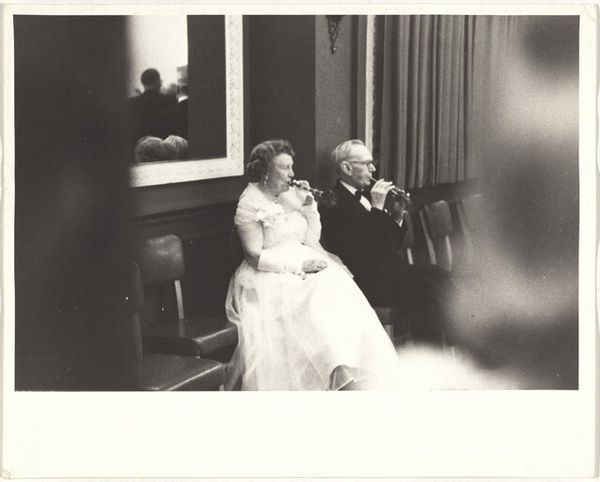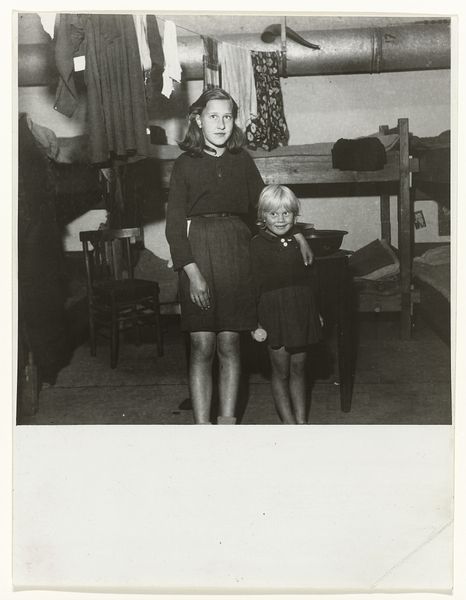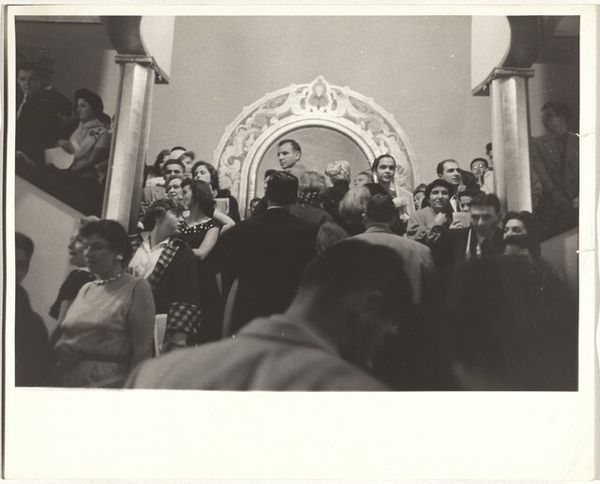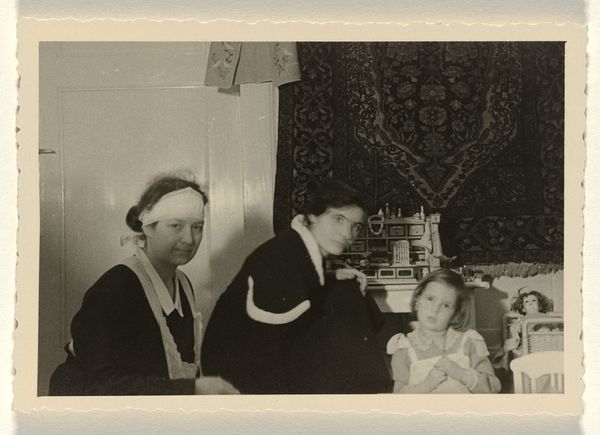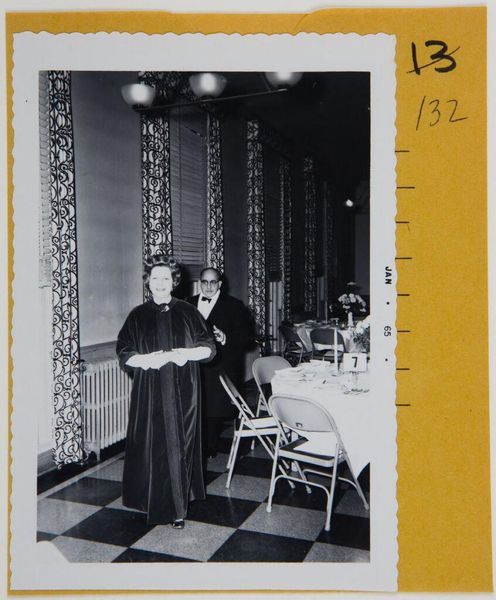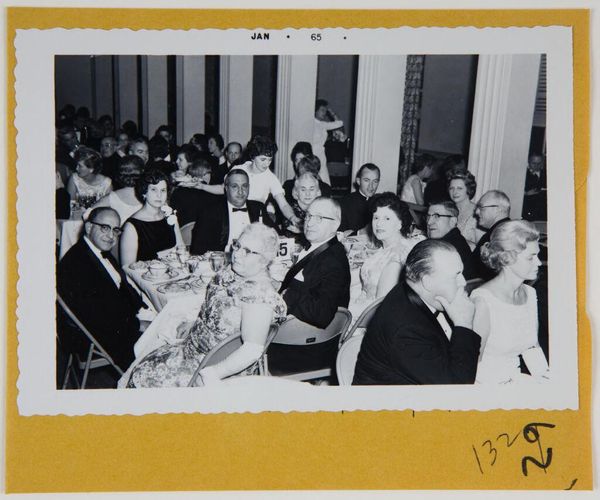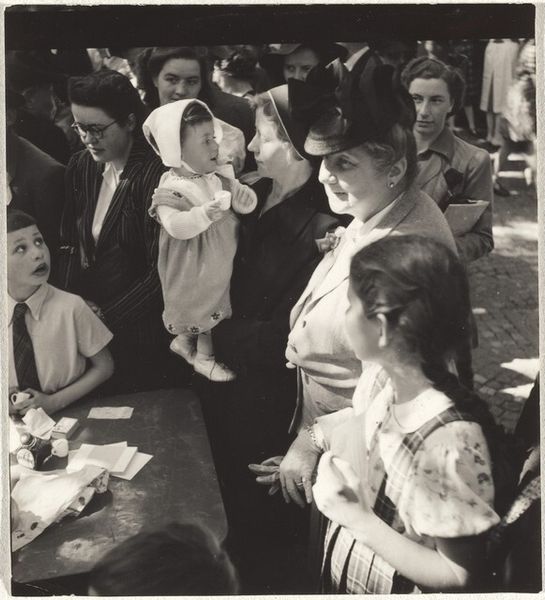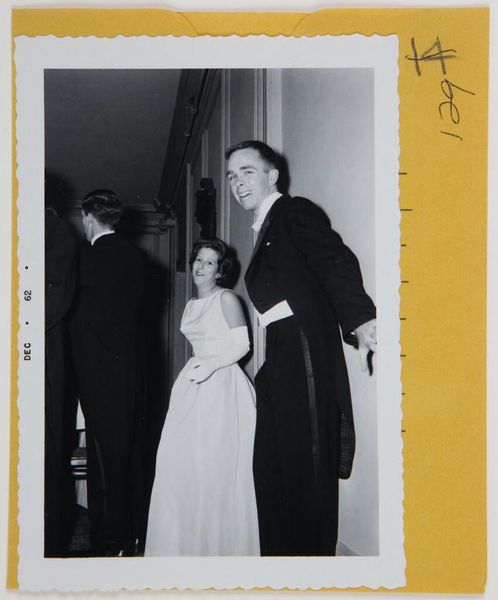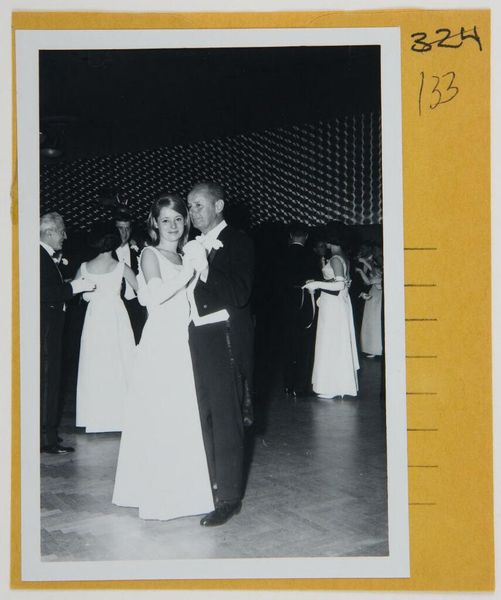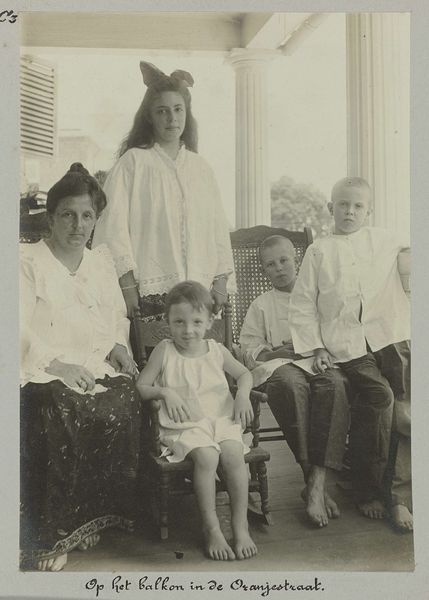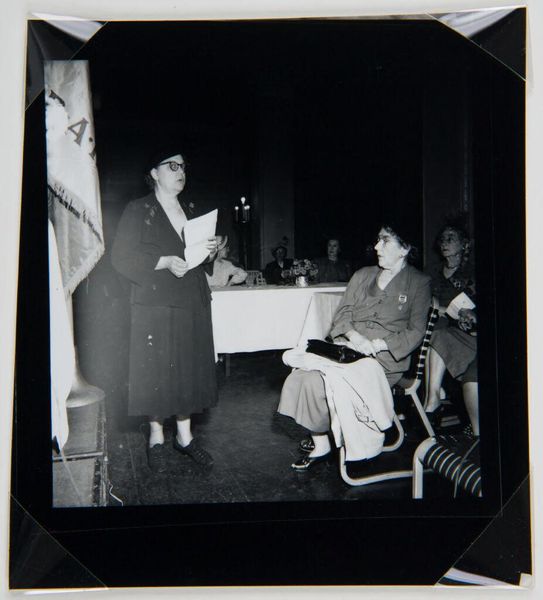
print, photography, gelatin-silver-print
#
portrait
#
print photography
#
narrative-art
# print
#
street-photography
#
photography
#
gelatin-silver-print
#
modernism
Dimensions: sheet: 20.3 x 25.2 cm (8 x 9 15/16 in.)
Copyright: National Gallery of Art: CC0 1.0
Editor: We are looking at Robert Frank's gelatin silver print "New Year's Eve - Los Angeles" made between 1955 and 1956. The photograph depicts what seems like an older couple in party hats amongst other blurry people celebrating in the background. They look quite solemn, which is a contrast to what you’d expect from a New Year's Eve party. What do you see in this photograph? Curator: I see a powerful critique of postwar American society masked in a seemingly simple photograph. Frank, an immigrant, offers a stark, and perhaps disillusioned, view. He doesn't show us the idealized American dream often portrayed in the media, but rather a quieter, perhaps more melancholic reality. Consider the socio-economic context: was this celebratory prosperity evenly distributed? Did everyone have reason to celebrate? Editor: That's interesting. I hadn't thought about it that way. The couple’s expressions definitely make more sense now. Are you suggesting that Frank deliberately chose to highlight this somber aspect of the New Year celebration? Curator: Absolutely. Frank's work, especially his book "The Americans," challenges the dominant narrative. He used photography as a tool to dissect societal norms and power dynamics, even on seemingly apolitical occasions like this. He exposes the underlying anxieties and disparities present even in moments of supposed collective joy. What kind of narrative do you think this creates for viewers? Editor: I suppose it makes one question the image of a happy, unified America that was often promoted during that time. I definitely see that Frank prompts one to look beyond the surface of these "ideal" representations of the American experience. Curator: Exactly. And that critical lens remains incredibly relevant today as we continue to grapple with similar questions of identity, representation, and social justice. Editor: I agree. Thanks, I now understand better how photography can operate as an active form of social commentary. Curator: My pleasure. Remember to look beyond what's presented; every artistic choice is loaded with meaning.
Comments
No comments
Be the first to comment and join the conversation on the ultimate creative platform.
